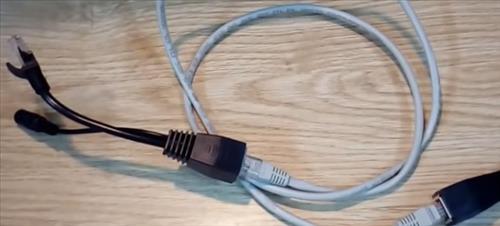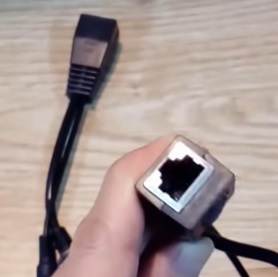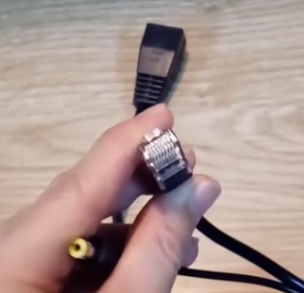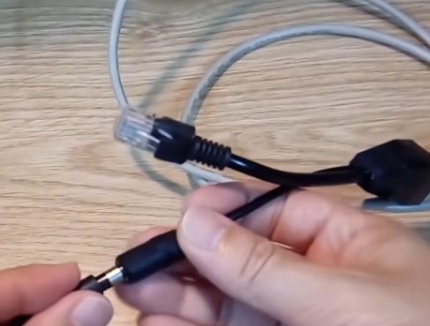
Many cameras use a BNC connection for video and sound, along with a separate power supply connection.
This works fine as long as the analog video and power cable can be run to the location of the camera from the DVR.

Cat5, 5E, 6, 7, 8 wire can also be used with a low-cost POE (Power over Ethernet) adapter that is quick and easy to setup.
The adapter, also called an Inline Power Injector, simply converts the signal inputs to transfer over Ethernet and reconvert them on the other side.

There are several brands available, all of which are very low-cost, easy to setup adapters.
The install setup is very easy by plugging an Ethernet cable into the two adapters.

One side will need the power supply plugged in, which will transfer power over the Ethernet wire.

There are male and female connectors, so the other side will have the right power plug input when needed.
Be sure to check the voltage on the camera’s systems power supply you are using and match it to the inline adapter.
Most will be rated 5-12 Volts DC and 1 AMP; it is best to double-check and be sure the cable can handle the voltage.
Passive POE can usually operate up to 100-130 feet.
Summary
Converting a BNC-style or non POE camera system to work over Ethernet is easy to do with a low-cost adapter.
If you have the time and soldering iron, home kits can also be built and used.
The POE converting cables are low-cost components so it is likely is not worth the time and energy to build it yourself, but it is an option.
The cables shown above only convert the plugs to carry a signal over an Ethernet wire and convert it back. A power adapter will still be needed on one end to send voltage down the line.
Have you converted a Non-POE camera system to work over Ethernet? Let us know your thoughts below.
I have Poe nvr and want to connect a non Poe camera, what is the best way to do this. Please
I plan to order ZenWiFi AX (XT8), and I see 19V up to 1.75A specs for power. Are there any injectors/splitters that could work for it? If not, do you see any way to provide PoE for this model?
Ring has made a nice camera but is not PoE. I already have a hook up in place for my current PoE wireless camera with pre-existing wiring to my panel in the house, nowhere close to my router. I purchased a PoE switch to make it work and it does fine. I want a better camera and want to make sure that if I purchase a passive POE injector and Splitter in theory, I should be able to connect this Ring camera. Any ideas that I may have missed?
With this adapter can I use a POE switch as power supply to non-POE or wireless IP camera instead of an outlet?
No, not without additional hardware. The PoE switch provides a regulated supply at 48 V. The PoE switch turns this power on or off according to certain sensing parameters. Your non-PoE or wireless IP camera probably requires a supply different from nominal 48V. Usually there are losses, so in general you’d need to regulate the supplied voltage, which will be less than 48V by the time it makes it out to your equipment, down to the 12V or 24V required by your equipment. Also, you’ll need a plug to connect from the non-PoE or wireless IP camera to the power supplied through the Cat 5 or Cat 6 Ethernet cable. Since you’re probably relying on this equipment for something important, you might be advised to do what it takes to connect it with equipment designed for this purpose in mind, reviewed by many experienced engineers and manufacturers.